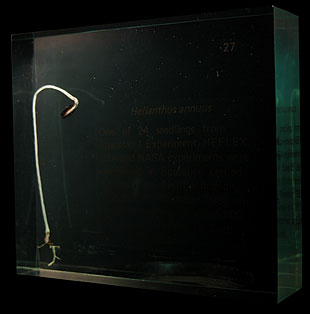
STS-9, launched 11:00:00am ET on November 28, 1983, was the ninth launch of the Space Shuttle and first flight of the Spacelab module. On-board Columbia, astronauts John Young, Brewster Shaw, Owen Garriott, Robert Parker, Byron Lichtenberg, and the first European Space Agency astronaut Ulf Merbold orbited the Earth 167 times before landing at Edwards Air Force Base, CA. Mission elasped time was 10 days, 7 hours, 47 minutes, and 24 seconds.
Spacelab l, a joint NASA/European Space Agency (ESA) program, demonstrated the ability to conduct advanced scientific research in space, with astronauts and payload specialists working in the module and coordinating their efforts with scientists on the ground.
Seventy-two scientific experiments were conducted across a wide array of fields, including astronomy, atmospheric, plasma, and solar physics, material and life sciences, and Earth observations.
One of these experiments, the HEFLEX Bioengineering Test, was to determine whether or not nutation (spiral motion of growing plants) took place in the absence of a gravitational force. The test plants were dwarf sunflower seedlings (Helianthus annuus).
The equipment consisted of a dark box, within which four test plants illuminated by infrared light could be located in the field of view of a video camera and a carry-on container of 24 plant modules, each containing one plant. Plants at various stages of growth were kept in a rotor compartment under a 1-g acceleration until it was their turn to be tested in front of the camera.
This seedling, one of the 24 sunflower plants flown, was encased in lucite for a museum display.

© 2020 collectSPACE.com All rights reserved.
Questions? E-mail [email protected]

|